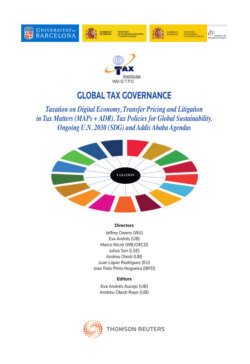Читать книгу Global Tax Governance. Taxation on Digital Economy, Transfer Pricing and Litigation in Tax Matters (MAPs + ADR) Policies for Global Sustainability. Ongoing U.N. 2030 (SDG) and Addis Ababa Agendas - Jeffrey Owens - Страница 31
На сайте Литреса книга снята с продажи.
UNLOCKING TRUST WITH BLOCKCHAIN TECHNOLOGY
ОглавлениеThe vision of integrated compliance is largely reflected in a recent OECD FTA report39 which provides much justification and vision for a world where tax is designed into systems of record, so compliance is assured. But little is in the report about how feasible it is with current technology. Given the advances in machine learning outlined above and the power of existing rules-based systems the components are potentially in place today to compose a new fully digital path for ensuring tax compliance. But there’s a gaping hole around how the tax administration can gain the trust necessary to rely upon the validity of system output without the need to audit. Even if a jointly developed machine learning algorithm were created and certified, how can tax administrations be confident it was used by taxpayers? How can they ensure it was not modified prior to use?
This is where blockchain may provide the answer, or more appropriately the advancements in cryptography that have arisen as part of blockchain innovations may do so. But before we go there let’s acknowledge that much has been written about the challenges of cryptocurrencies, which are based upon blockchain technologies, provide for tax collection. And for good reason as enforcement of national tax regulations in a free entry, pseudo-anonymous, borderless, global networked set of systems worth over a trillion dollars that is breeding new and innovative financial products by the minute is no easy feat.
However, underappreciated is the contributions the advancements in cryptography present for tax administrations. Indeed, e-commerce took off to now almost $4 trillion, but only when consumers trusted it. Trust was built both technically using cryptographic encryption (SSL encryption) and certifications (e-trust and other seals of approval). The same can now potentially be realized in transaction tax specifically, and perhaps more broadly to other tax types in the future.
As the Economist Magazine stated in its cover story of October 2015 entitled “Trust Machine”,40 the blockchain lets people who have no particular confidence in each other collaborate without having to go through a neutral central authority. With recent advances confidence can now be extended from people to systems, as both data and the algorithms can now be secured with cryptography.41 This enables remote and continuous monitoring of taxpayer systems without the need to extract all data, without the needing to reconcile it, and without the need to protect it as data always stays within the taxpayers’ control. With the tax administration as one end and a taxpayer at the other it is now possible to enforce alignment of both data and systems in real time. Systems can be synchronized and kept in sync automatically – a continuous monitoring capability.
In addition to guaranteed synchronization, privacy preserving technologies that enable remote inquiry of data without the need to transmit or disclose underlying details are now available and rapidly being deployed.42 These technologies could allow tax administrations to direct queries into the taxpayer’s systems and receive answers without having to take possession of the underlying data. They could form the basis of privacy preserving audit capabilities to complement continuous monitoring.
